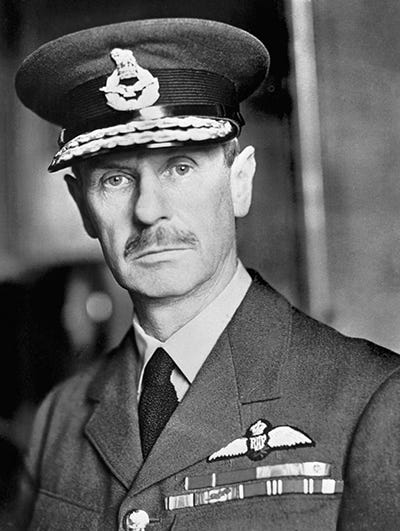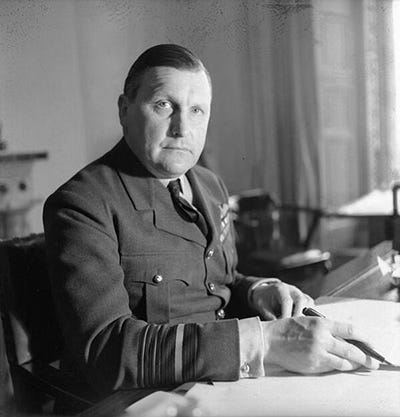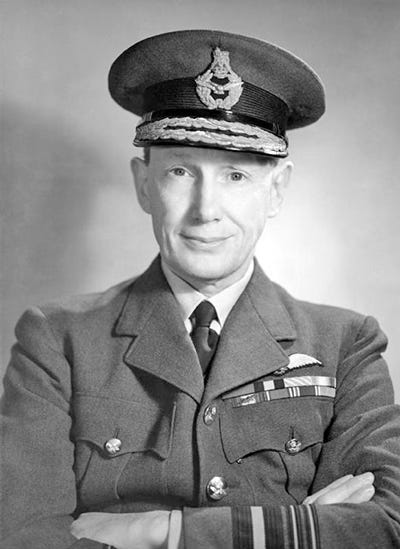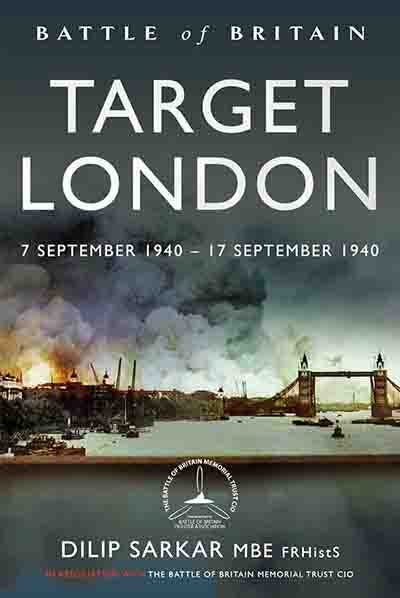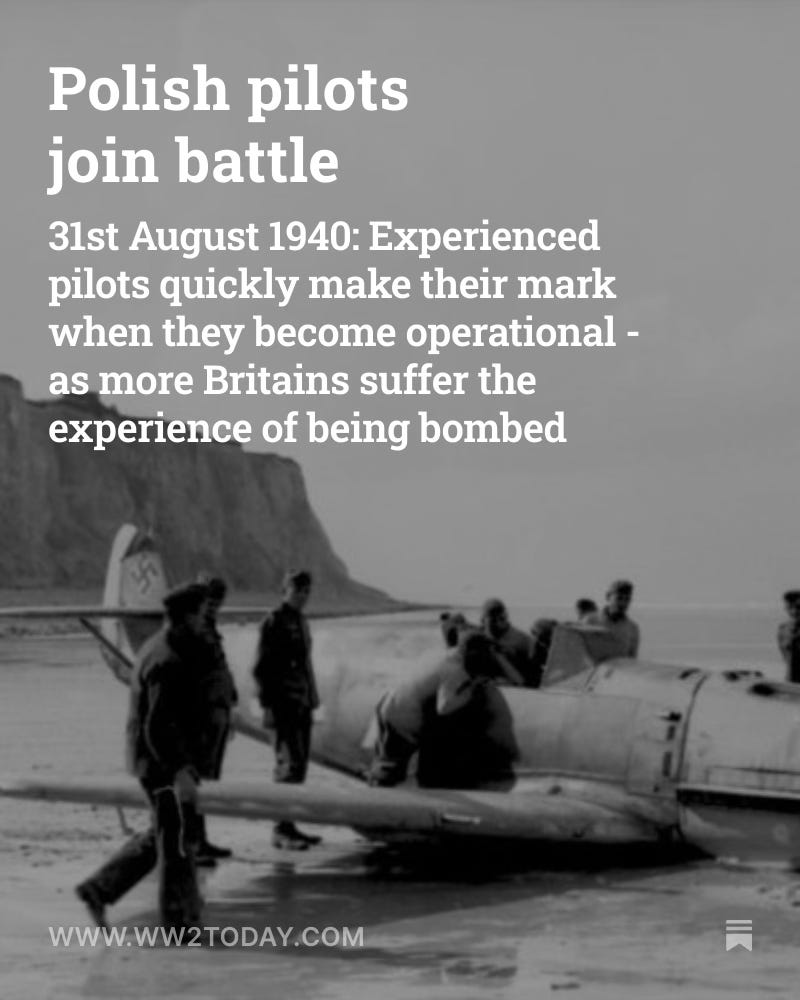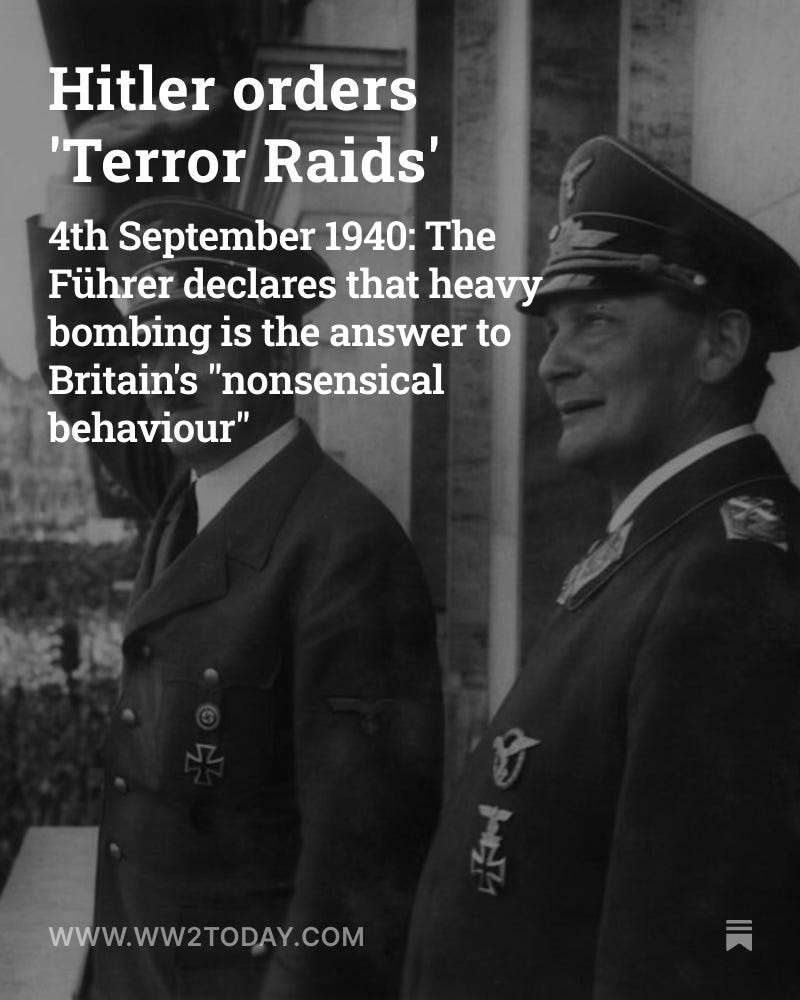'Target London'
Another excerpt from Dilip Sarkar's comprehensive history of the Battle of Britain - this time from the volume covering 7th September -17th September

A few weeks ago I featured volume 2 of Dilip Sarkar’s seven-volume history of the Battle of Britain - The Breaking Storm: 10 July 1940 – 12 August 1940 (Battle of Britain). His fourth volume was the source of Bill Green's graphic account of being shot down on the 29th August, ‘Baling out with a shot-up parachute’.
… had he carried on for another week or ten days hammering my fighter aerodromes, I think he might have had them right out of action.
By the 7th September, we have reached the fifth volume and a critical date in the battle. As the following excerpt from the introduction to Battle of Britain Target London: 7 September 1940 – 17 September 1940 makes clear, RAF Fighter Command had good reason to be worried by this stage in the battle. It was also the date of a crucial conference on the RAF strategy - the realisation that they were ‘going downhill’, at least for now :
Fighter Command’s unsustainable losses of the past few days, coupled with the knowledge that the Germans had now assembled hundreds of invasion barges at the Channel ports, gravely concerned Air Chief Marshal Sir Hugh Dowding, Chief of Fighter Command. Moreover, moon and tide predictions meant that if the Germans were to mount their threatened seaborne invasion, Operation Seelöwe would have to set sail over the next few days – before unfavourable autumn weather made such an ambitious sea crossing impossible. Beyond doubt, then, this was now a decisive time for both sides: Britain’s survival hung in the balance, and the Germans needed to force a decision, quickly – or lose what was an unexpected and unique opportunity in history to invade and conquer Britain.
In the previous volume, Airfields Under Attack: 19 August 1940–6 September 1940, we explored what is generally accepted by the Battle of Britain’s popular narrative to have been the most critical phase. In that narrative we are told that 11 Group’s airfields were so battered by German bombing that their future as operational bases was hanging by a thread. Our investigation revealed that the period was critical – but not because the airfields were on their knees.
Had the Germans concentrated their efforts on, and not deviated from, airfield targets, however, the story could have been very different – as Air Vice-Marshal Sir Keith Park said himself: ‘had he carried on for another week or ten days hammering my fighter aerodromes, I think he might have had them right out of action’.

The critical factor by the dawn of 7 September 1940, then, was not that 11 Group’s airfields were a shambles – but that Fighter Command was losing pilots, including those with irreplaceable combat experience, at an unsustainable rate. Again, as Park said,
during the first week in September, I was a very worried man because I was short of pilots; that was the only thing that worried me … I was never really grounded through lack of aircraft although we were nearly grounded through lack of pilots on many occasions. We were short of pilots from early in the battle owing to bad planning on the part of the Air Ministry’s training department.
After the battle was over, truly won, I was sent to Flying Training Command for a year to take over the training of our fighter pilots and the first thing I learned, to my amazement, was that Fighter Command … that Flying Training Command, had never heard throughout 1940, they’d never been told by anybody, that we were desperately short of pilots.
I was working them to the limits of their physical and mental capacity and we had no relief.
Well, that was my main problem and the reason that I spent every afternoon from after I thought the main attacks were over … 4 or 5 o’clock … I went up to the Northolt aerodrome every afternoon in the week and climbed into my old Hurricane and flew around some of the aerodromes every day, seven days a week in order to talk to the pilots, the flight commanders, the squadron commanders, to see how they were standing the strain – because I was caning them. I was working them to the limits of their physical and mental capacity and we had no relief.
That was the problem especially vexing Air Chief Marshal Dowding as we now forensically investigate the events of 7 September 1940–17 September 1940 – the crucial phase in the fighting.
After lunch on the afternoon of 7 September 1940, Dowding held an urgent meeting at Fighter Command HQ to decide measures for ‘going downhill’ in an economical manner – while providing for a rapid climb back. When losses decreed, depleted squadrons in 11 Group were replaced by those from other groups, which were at full-strength. Freshly trained replacement pilots lacked combat experience, however – and that was an acute problem.
The DCAS, Air Vice-Marshal Sholto Douglas, felt that Dowding was being overly ‘pessimistic’. Dowding, conversely, was bemused by Douglas’s apparent inability to grasp the difference between a trained and a combat-ready pilot – and in any case, there were insufficient trained replacement pilots, combat-experienced or otherwise.
Dowding’s SASO [Senior Air Staff Officer], the Australian Air Vice-Marshal Strath Evill, provided figures confirming that in the four weeks ending 4 September 1940, casualties totalled 338, whereas during that period the Operational Training Units had only converted 280 pilots. Air Vice-Marshal Keith Park, a New Zealander, pointed out that his 11 Group was suffering nearly 100 casualties a week. Losing patience, Dowding apparently snapped at the DCAS: ‘You must realise that we are going downhill’.
Douglas’s response was to suggest creation of a fourth OTU, but Evill interjected, pointing out the impracticality of this suggestion because it would take too long, Dowding adding that another training unit would be a further drain on precious resources. The solution – arrived at by the ever-able Dowding and his faithful lieutenant, Park – was the ‘Stabilising Scheme’. This categorised fighter squadrons as ‘A’, ‘B’ or ‘C’ units. ‘A’ were those in the frontline, maintained with a minimum strength of sixteen operational pilots; ‘B’ were those being rested, with up to six combat-ready pilots, who could be called upon if necessary; ‘C’ were those currently rebuilding, in quieter northern sectors, having previously suffered heavy losses over southern England, and unlikely, therefore, to be brought to battle. This, then, provided an opportunity for OTU-fresh pilots to receive further operational training on these ‘C’ squadrons before either rotating south or being posted to ‘A’ or ‘B’ units.
When the minutes of the ‘Going Downhill’ conference were later provided to the DCAS, he objected, claiming that the minutes misrepresented him, casting him in the role of ‘Mutt’, a foolish music-hall comedian who asked stupid questions. Fighter Command’s SASO, Evill, replied that the minutes were virtually verbatim.
Dowding and Park stood firm in the belief that their use of resources was sound, and – especially at such a time of crisis – had no time for Air Ministry incompetence or politics. Unfortunately, they failed to appreciate that their open contempt for the DCAS at this conference had placed them in grave danger from the enemy within – which will become evident in due course. Nonetheless, Dowding’s ‘going downhill’ strategy would now hold the line. What no one in Britain knew, however, was that 7 September 1940 would, regardless of what state the airfields were actually in, prove to be the major turning point in the Battle of Britain.
© Dilip Sarkar 2024, 'Battle of Britain Target London: 7 September 1940 – 17 September 1940'. Reproduced courtesy of Pen & Sword Publishers Ltd. NB The above images are not from this title.


